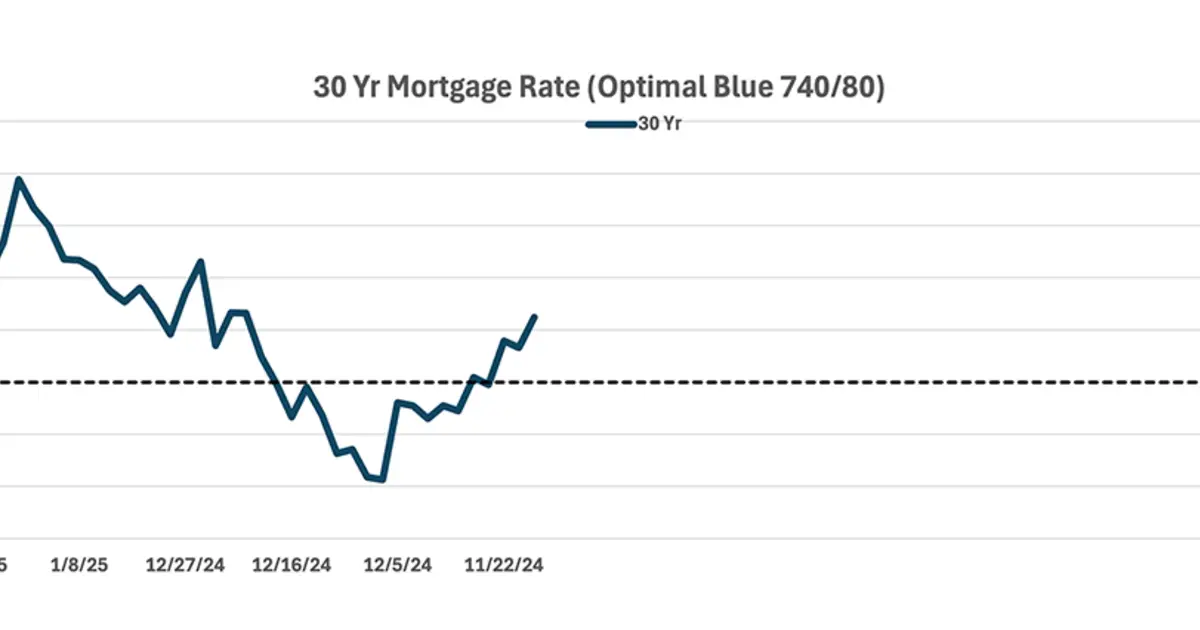January 2025 Market Update
As we move further into 2025, shifting economic trends continue to shape the housing market in meaningful ways. In this update, we take a closer look at the latest data on interest rates, inflation, and mortgage trends to help you stay informed and guide your clients with confidence.
Interest Rate Outlook: Market Expectations and Impact on Housing
The Federal Reserve has maintained interest rates within the 4.25-4.50% range, with market sentiment indicating no immediate rate cuts at the upcoming January 29 meeting. However, traders are increasingly confident that the first cut may come in May, with a possible second reduction later in the year.
Despite this, long-term rate expectations remain elevated, with the market currently pricing in a terminal rate of 3.5% by 2026. Historically, this suggests that 10-year Treasury yields could hover around 5%, translating to 30-year mortgage rates in the 6.5% range.
Mortgage Market Dynamics: Unlocking Homeowners and Refinancing Potential
Mortgage rates have seen a slight decline of approximately 0.2% over the past week, driven by softer-than-expected inflation data. However, the 30-year fixed mortgage rate continues to fluctuate around the 7% threshold, presenting affordability challenges for many buyers.
A notable trend in the mortgage market is the shift in the rate distribution of existing mortgages. As of Q3 2024:
- The percentage of outstanding mortgages with rates below 4% has declined to 55.2%, down from 65.1% in early 2022.
- Conversely, mortgages with rates at or above 6% have doubled to 17.2%, the highest level since 2016.
This shift suggests that more homeowners may consider refinancing if rates decline further, potentially increasing market liquidity and home turnover in the coming months.
Inflation and Market Sentiment: A Delicate Balance
Inflation remains a critical factor influencing interest rate decisions and market sentiment. The Consumer Price Index (CPI) closed 2024 at 2.9%, marking the third consecutive month of acceleration. Core CPI has held steady at 3.2% since June, reflecting persistent price pressures despite recent easing.
Two major inflationary forces to watch:
- Rising Oil Prices: Up more than 10% recently, which could have broader economic impacts beyond just fuel costs.
- Stronger U.S. Dollar: A 5% appreciation since October, which may help temper inflation by reducing the cost of imported goods.
Despite inflation concerns, the bond market has already priced in a “soft landing” scenario, meaning investors are expecting gradual economic cooling without a significant recession. However, uncertainty surrounding the new administration’s fiscal policies is keeping long-term investors cautious, preferring shorter-term securities over long-duration bonds.

